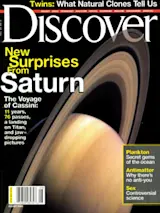Life Before Life
“What Came Before DNA?” [June] painted a far-too-rosy picture of life arising as proposed by Jack Szostak and Steven Benner’s theory. For example, it is stated that “under the appropriate conditions, phosphate reacts with ribose and nucleobases to form a large organic molecule called a nucleotide.” That statement is misleading because the only “appropriate conditions” known to do this occur in actual living cells, and they use protein enzymes—which are not applicable to the origin of life—to do so. Also, the type of experiments being referenced use preactivated nucleotides, and the plausibility that the main preactivating substances are chemical precursors of the origins of life is questionable at best. Another important point is the low probability of hitting upon an RNA sequence capable of serving the RNA replicase role. The closest thing to an RNA replicase produced by directed evolution (mentioned in the article) is about 180 ...














